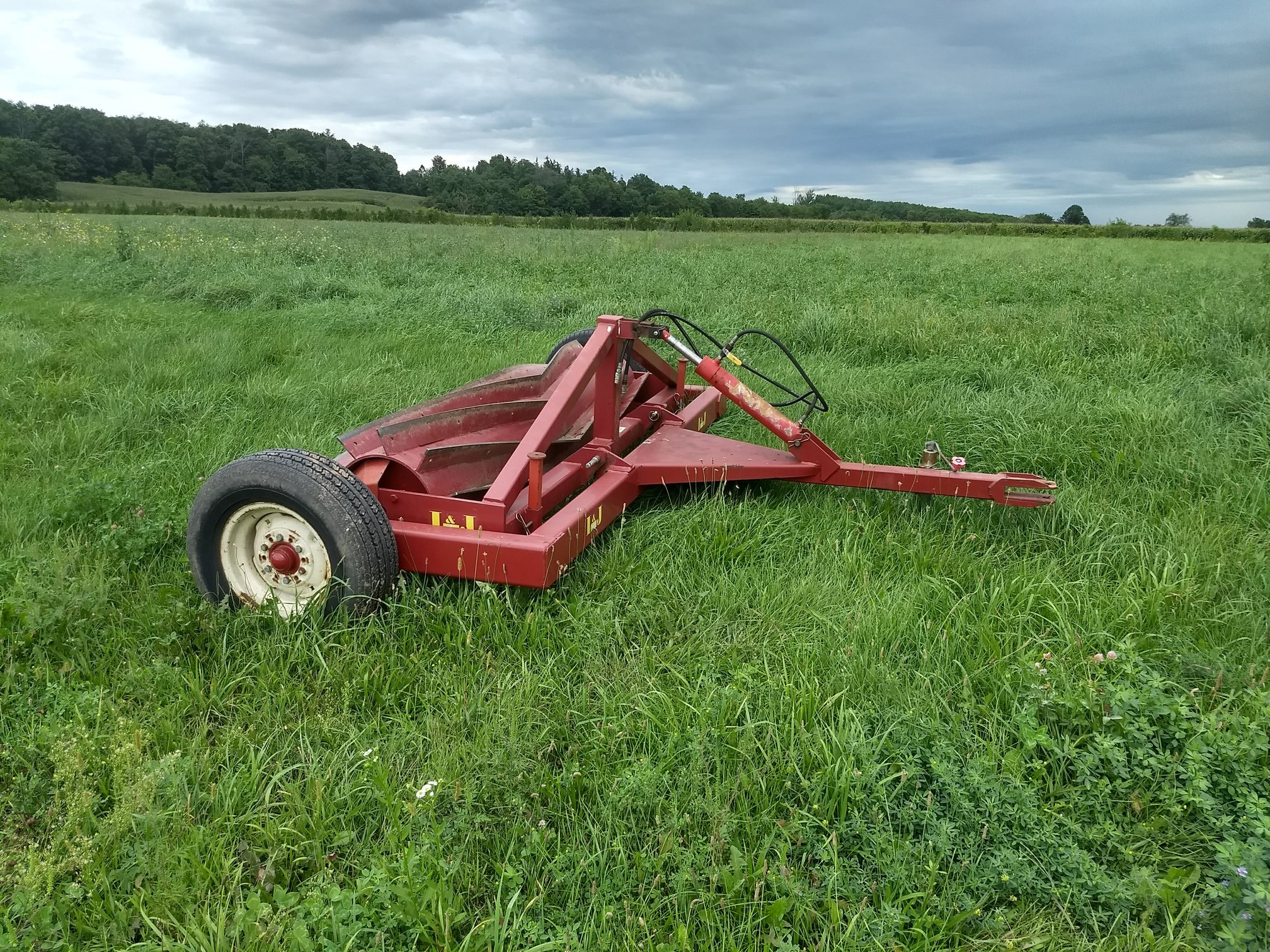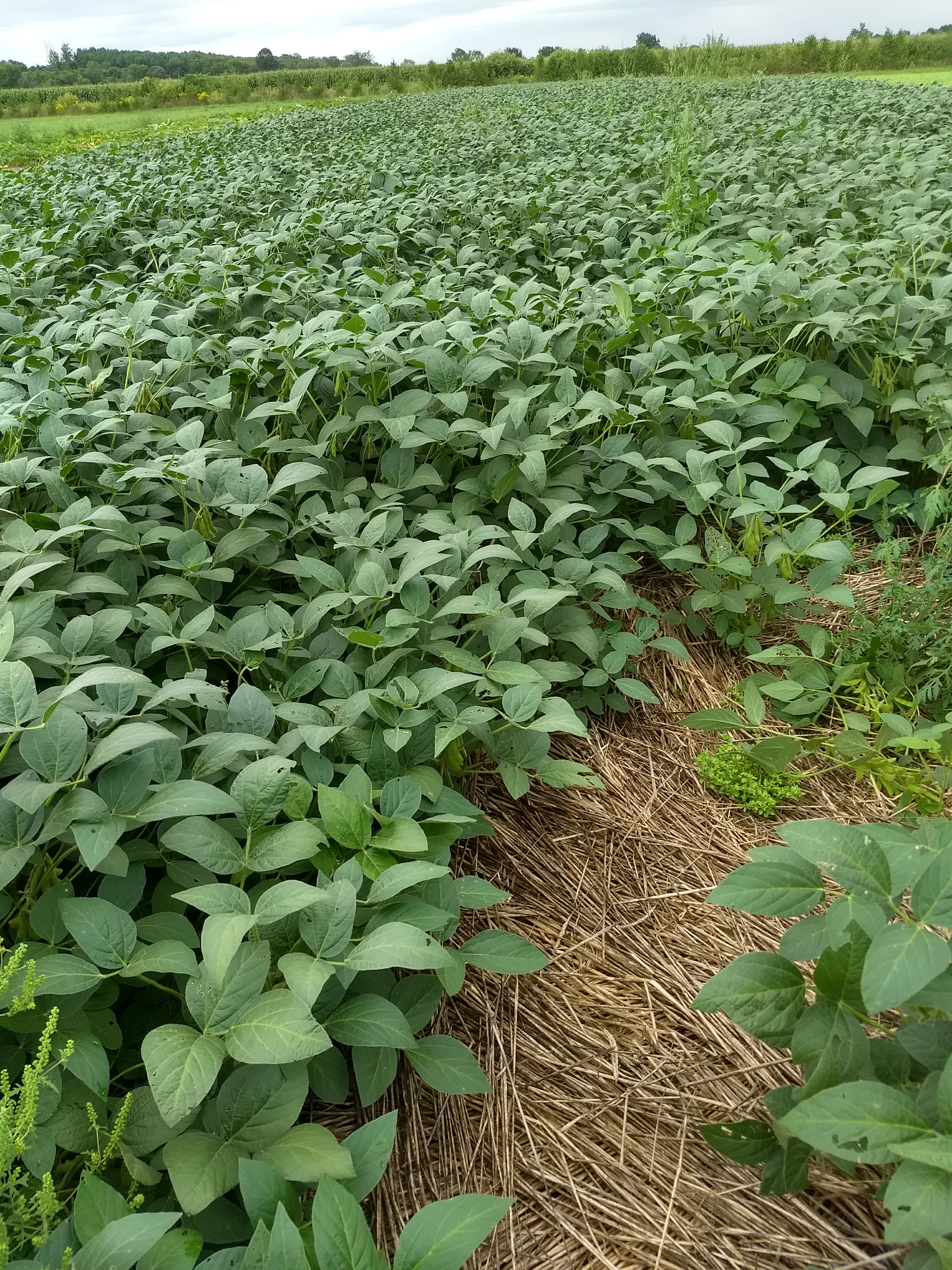On our recent journey back east from BC, we had the pleasure of stopping off for a visit with Ken and Martha Laing at Orchard Hill Farm in southwestern. Orchard Hill Farm is where my spouse Jolianne and I worked in 2009 during the summer after graduating from university. This is where we learned to farm with horses, and learned to live and work together as a couple 24/7. It was wonderful to be able to return to OHF after all these years and see the evolution of the farm (and show our son Milo our roots!)

Having taken their semi-retirement when their daughter returned to the farm to take over the vegetable portion of the farm, Ken and Martha now spend their time in the caribbean… just kidding, Martha is loving her time with her grandchildren and Ken has launch full steam into organic no-till research and is launching a custom grazing operation on 60 acres of the farm… yup, real farmer’s retirement!
This year Ken is running a randomized plot replicated experiment to compare different no-till approached to growing spring grains. OK… it’s important to note here that we what we’re talking about here is not really no-till, but rather reduced tillage. The point here is to find ways of managing crops that nurture soil health by reducing the amount of tillage.
In this trial, Ken is looking various winter-killer green manure mixes for the no-till planting of oats and barley in the spring: Buckwheat, oats/barley/peas mix, daikon, oats/barley/fava bean mix, and sorghum-Sudangrass (Sudex). As a control, he is comparing this to fall plowed hay field.


One thing I noticed was that there seemed to be fewer earthworms in plots growing the sorghum Sudan-grass. I took a quick look online and did I not see any mention of this. Have any of you noticed this on your farms?
This approach is also used to establish multiple successions of green manures without having to till it as much. For example, a sequence such as: rye (killed with roller crimper at milky stage in june) -> Buckwheat (killed with roller crimper in august) -> Oats and peas (frost killed).
Another no-till crop establishment technique Ken is playing with (yes, playing… if you could see him managing the farm… it’s like a kid in an amusement park!) is the classic rolling/crimping of cereal rye at flowering to kill it and create a mulch for a no-till crop…. in this case a plot of squash and one of soybeans.

The results for the squash have been sub-optimal for the past 2 years for reasons Ken is still searching for. After the first year, Ken suspected that the rye residue was immobilizing nitrogen, but additional fertility at planning the second year failed to correct the situation.

On the other hand, the soybeans look great and have fewer weeds than back in the day when Ken was growing soybeans and cultivating them! There were tons of pods, though they were filling out a little slowly. Who knows..? Looking forward to hearing back from Ken regarding yield when he combines them in the fall.

Finally, I wanted to share these pictures of a horse drawn, single row root lifter that Ken built. He says 2 horses pull it fine for a shallow rooted crop like leeks or celeriac, but that 4 horses are necessary for lifting a deep rooted crop like parsnip. For carrots… it depends on how many rows need to be lifted and how long the carrots are.


The main challenge that Ken notes regarding implement a no-till approach in an organic system is that due to the challenge of controlling weeds without tillage, it ends up not really being no-till but rather an alternating of tillage and no-till. The result is that the benefits of no-till are not fully experienced. According to Ken’s nephew who is a conventional no-till farmer, the soil actually gets harder and less well structured for about the first 5 years of no-till.
How do we implement no-till on organic vegetable farms? Some of the techniques that excite me in this domain are the use of occultation using silage tarps and the use of deep mulch ‘living soil’ method .
What about you? How is your soil doing?
Are your tillage practices in line with your life’s intentions and purpose for the farm?
Where do you see an opportunity in your system to shift your tillage methods so as to foster soil health?
I love how dedicated our community of farmers is to implementing the changes our world so dearly needs. Remember, you play such a critical role in building the world we would love our children and grandchildren to inherit! You are part of a movement that is way bigger than just your individual farm….. Oh, and let’s not forget to have fun too!
Power to the playful!